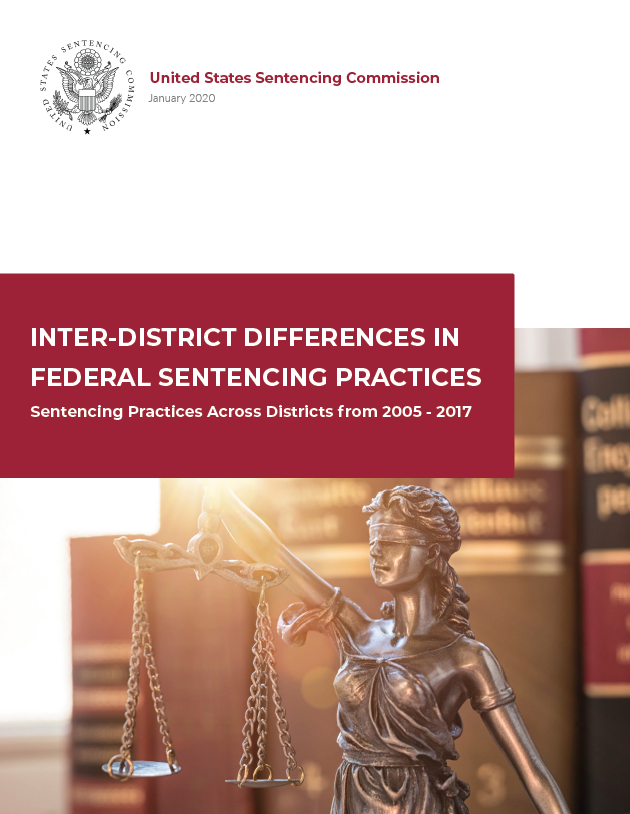Overview

The Commission’s ongoing analysis in this area directly relates to a key goal of the Sentencing Reform Act of 1984: reducing unwarranted sentencing disparities that existed in the federal judicial system. In particular, the Act was the result of a widespread bipartisan concern that such disparities existed both regionally (e.g., differences among the districts) and within the same courthouse.
Having analyzed the differences within the same courthouse in its Intra-City Report, the Commission now turns in this report to examining regional differences since Booker.
- Full Report
- Report At A Glance
- Accompanying Materials:
Browse Report by Section:
- Introduction & Key Findings
- Methodology
- Findings
- Conclusions
-
Appendices
- Appendix A: Standard Deviation Analysis
- Appendix B: District Lists by Period
- Appendix C: Statistical Outliers
- Appendix D: Analysis by Drug Type
- Appendix E: Matched Analysis
Related Reports:
- Influence of the Guidelines Report (December 2020)
- Intra-City Report (January 2019)
- Demographic Differences Report (November 2017)
- 2012 Booker Report (December 2012)
Key Findings
While the extent of differences in sentencing practices vary depending on the specific primary guideline, the overarching trends indicate that, consistent with the findings of the Commission’s 2012 Booker Report, sentencing outcomes continue to depend at least in part upon the district in which the defendant is sentenced. In particular, the Commission finds that:
- Variations in sentencing practices across districts increased in the wake of the Supreme Court’s 2005 decision in Booker. These inter-district sentencing differences have persisted in the 13 years after Booker and six years after the Commission’s 2012 analysis.
- Sentencing differences increased for each of the four major offense types analyzed (fraud, drug trafficking, firearms related offenses, and illegal reentry) during the Gall Period. This trend continued for some, but not all, of the four offense types in the six years following the last period analyzed in the Commission’s 2012 Booker Report.
- Guideline amendments intended to promote uniformity by addressing judicial concerns regarding severity have had an inconsistent impact on inter-district disparity. Specifically, despite multiple significant revisions to the drug trafficking guideline, including the two-level reduction of the base offense level for all drugs, districts increasingly diverged in their sentencing practices for drug trafficking offenders. However, the comprehensive amendment to the illegal reentry guideline contributed to increasing uniformity in sentencing practices in the Post-Report Period.
-
Certain districts have consistently sentenced more—or less—severely in relation to the guideline minimums than other districts, both over time and across offense type.

